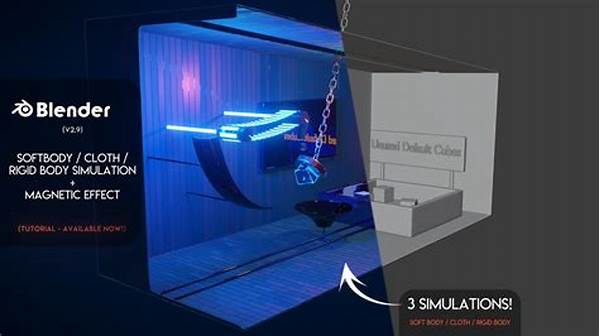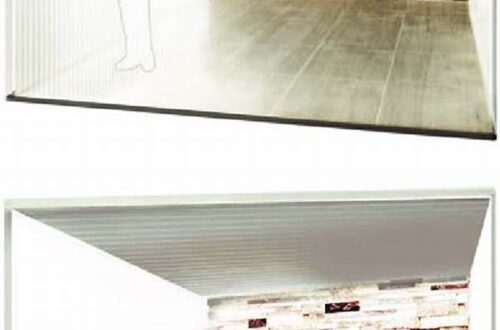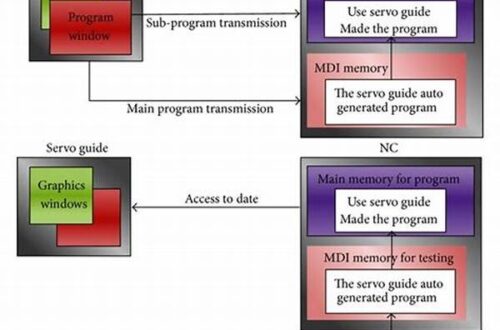Hey there, simulation enthusiasts! If you’ve ever dabbled in the realms of 3D graphics, gaming, or physics simulations, you’ve probably stumbled upon the terms “soft-body” and “rigid-body simulations.” These fascinating techniques are essential in making our virtual worlds appear as realistic as possible. But what exactly are they? Let’s dive into the world of virtual dynamics to explore what makes each of these simulations unique and indispensable.
Read Now : Increasing Player Interaction In Mobile Gaming
Understanding Soft-Body and Rigid-Body Simulations
Okay, let’s get a bit technical—just a bit! Soft-body simulations are all about creating objects that bend, squish, and stretch just like they would in the real world. Imagine a jelly blob falling onto the floor; it deforms and might even bounce a bit. Soft-body simulations capture such dynamic behavior, making objects in virtual environments behave like they’re made of flexible materials. On the flip side, rigid-body simulations deal with objects that do not change shape—picture a billiard ball smacking another and transferring motion but not bending or squishing. That’s rigid-body behavior for you! Both simulations are crucial for different scenarios in gaming and animation, providing realism and interactivity. Whether you’re crafting a thrilling car crash scene or animating a playful rubber ball, understanding the nuances between soft-body and rigid-body simulations can make all the difference. Each has its special set of rules and formulas that dictate how objects interact and react within digital space, and mastering them can lead to some incredibly realistic and immersive experiences.
Key Aspects of Soft-Body and Rigid-Body Simulations
1. Realism in Animation: Soft-body and rigid-body simulations are the unsung heroes behind realistic animation, mimicking lifelike movements and reactions.
2. Physics-Based Reactions: Both simulations use physics laws to dictate object interactions, ensuring digital worlds make sense visually.
3. Game Development: Essential in game design, soft-body and rigid-body simulations enhance player engagement through realistic scenarios.
4. Material Representation: Soft-body simulations excel at representing flexible materials, while rigid-body simulations depict solid items expertly.
5. Computational Efficiency: Rigid-body simulations are generally less computationally intensive, making them perfect for scenarios requiring precision over flexibility.
The Pros and Cons of Soft-Body and Rigid-Body Simulations
Alright, let’s chat about the perks and pitfalls of jumping into the world of soft-body and rigid-body simulations. Soft-body simulations shine when there’s a need for detail and flexibility. Think squishy toys or jello-like textures; they’re great for creating that wow factor. However, the downside is they can be computationally costly and may slow down systems if not optimized correctly. Rigid-body simulations, on the other hand, are less demanding on resources and are perfect for scenarios needing solid and sturdy interactions without deformation, like simulating machine parts or handling character collisions. The trade-off is they can’t handle squishy scenarios, sticking to their rigid principles.
Top Tips for Mastering Soft-Body and Rigid-Body Simulations
1. Know Your Needs: Understand whether your project requires the flexibility of soft-body simulations or the precision of rigid-body simulations.
2. Optimize for Performance: These simulations can be resource-heavy. Streamline where possible.
Read Now : Beginner-friendly Game Builder Interface
3. Experiment with Dynamics: Play around with different materials and forces to get a feel for what works best in each scenario.
4. Leverage Tutorials: Plenty of resources are available online; don’t hesitate to use them.
5. Stay Updated: Technology evolves, and so do simulation techniques. Keep learning!
Applications of Soft-Body and Rigid-Body Simulations
Got an eye for how these simulations apply in the real world? From blockbuster movies to engineering marvels, they play significant roles. Soft-body simulations are used to animate lush, flowing fabrics in fashion design software or simulate body’s flexible tissues in medical applications, providing in-depth realism that’s key in educational and professional fields. Rigid-body simulations, meanwhile, are vital in construction and automotive industries, where it’s necessary to test the rigidity and durability of structures under various conditions. Together, they’re pivotal in a breadth of fields, changing the digital interaction landscape.
Challenges You Might Face in Soft-Body and Rigid-Body Simulations
Despite all their benefits, working with soft-body and rigid-body simulations isn’t always smooth sailing. Computational complexity is a major challenge; soft-body simulations, in particular, can be resource-intensive, requiring superior computational power and algorithms. Achieving realism may also pose a challenge since every project has nuanced requirements that demand a balance between computational efficiency and realistic outcomes. But don’t let these hurdles discourage you! With practice and the right resources, overcoming these challenges is entirely achievable.
Wrapping Up the World of Soft-Body and Rigid-Body Simulations
In summary, soft-body and rigid-body simulations are game-changers in how we interact with digital content. These methods empower creators to bring flexibility and solidity to life within our virtual worlds, providing immersive experiences that are nearly indistinguishable from reality. By understanding and mastering the unique properties of both soft-body and rigid-body simulations, developers and designers unlock countless creative possibilities. So, next time you’re wowed by a lifelike jelly creature in a video game or a shattering glass effect in a film, you’ll know just what made those incredibly realistic animations possible. Keep exploring, keep learning, and who knows? You might just be the next pioneer in the exciting domain of simulations!





